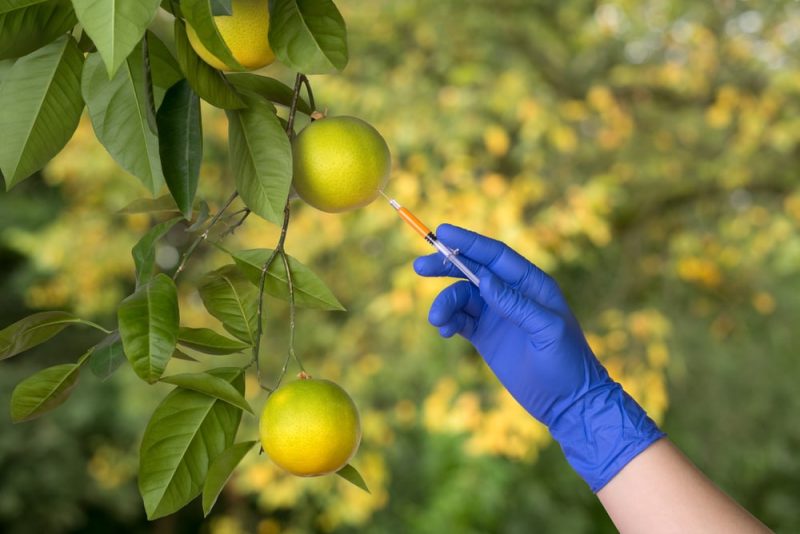The transgenic organisms are those that undergo some modification in their characteristics through the addition of genes corresponding to other species of organisms. The possibility that organisms are transgenic is not natural but is due to the action of man. For instance: enzymes are inhibited in tomatoes to slow down the decomposition time.
The existence of transgenic organisms is a contribution of the genetic engineering. The objective is to increase the productivity of crops and contribute to a sustainable agriculture that uses resources to improve food by eliminating toxic substances or modifying the proportions of its components to achieve healthier food.
When did genetic modification begin in plants and animals?
The history of the genetic modification of plants and animals has its origin only at the end of the 20th century.
The procedure started with bacteria, then a transgenic mouse. But there was a problem: the genetic modification was not passed on to subsequent generations. Some time later, in 1981, some scientists managed to transmit the artificially incorporated genetic material generationally.
Already in the last decade of the century, the use of genetic engineering made it possible to modify the seeds so that during cultivation the plants could resist herbicides. This substantially modified the way of carrying out the harvest cycle: instead of removing all the weeds by hand, today this process can be done in an industrial way through ‘direct seeding’, a type of sowing where the crop is not plowed. soil, thus protecting it and making it more permeable to water.
Criticism and controversies of transgenics
One of the most important issues in the use of transgenics is in the Economic performance. Genetic manipulation is often carried out so that plants can resist pests and chemical actions, so that vitamins are added artificially that eliminate economic problems, or to enlarge and systematize production.
A lots of experts alert on this question of treating ‘as if it were any type of product’ to food that will later be for humans, and they affirm that these practices alter ecosystems and are risky for humans and other species.
Regulation. In many cases, countries evaluate each of these foods individually. However, there are some nations (such as Russia, France or Algeria) that prohibit them in a generalized way. In some cases, countries choose to force the labeling of foods that contain a component derived from transgenic crops, as do the European Union, Japan, Malaysia and Australia.
Examples of transgenic organisms (plants and animals)

- Banana. To make it more resistant, two species are genetically crossed for its elaboration.
- Soy. To be more resistant to herbicides, the seed is modified. A large part of the soybeans is sown through direct seeding.
- Golden rice. The introduction of three new genes is carried out to obtain a rice with a higher vitamin A content.
- Salmon. A genetic cross is made between the Atlantic salmon with the Pacific salmon (which has a gene that stimulates growth), which gives a high economic benefit.
- Cow. The genetic makeup was modified to produce milk with an insulin precursor useful for diabetics.
- Glofish. They are fish modified with a jellyfish protein that makes them glow in white or ultraviolet light.
- RR corn. It was genetically modified to make it more resistant to glyphosate, a type of herbicide.
- Potato. Starch enzymes are invalidated.
- Sunflower. Genes are altered to make it resistant to drought.
- Virus resistant plum. They are plums resistant to the sharka virus, a lethal virus for this plant species.
- Sugar. It is modified to make it resistant to herbicides.
- Frogs. By crossing genes from two species, translucent frogs were created, which allow us to study the effect of chemicals on their organs.
- Primate. The first specimen of the genetically modified Rhesus Macaque (one of the monkey species) was born in 2000. This proved that a being as complex as this can be genetically altered.
- Pigs. Genes were inserted that allow the animal to produce an antigen that would make its organs easier for humans to accept.
- Tomatoes. Enzymes are inhibited to slow decomposition time.
- Alfalfa. This plant is genetically modified to make it resistant to a herbicide (glyphosate).
- Coffee. Genetic modification allows to increase production.
- Sheep. With human genes, it would allow in the not too distant future to use their organs to be transplanted into humans.
- Oranges. When exposed to ethylene, chlorophyll degradation is accelerated.
